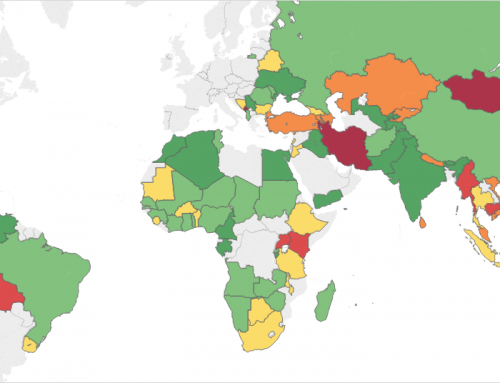This year’s MIMOSA field survey again showed that a large percentage of the population cites “personal convictions” or “religious beliefs” as key reasons not to borrow. Follow up discussions with respondents to our surveys pointed more generally to a negative connotation of credit that is associated to “being in need” rather to positive risk-taking or investment. Such negative connotation of credit has been documented by various research papers and is particularly well described in chapter 6 of the book Microfinance in Crisis.
The fear of the consequences of non-payment or delayed payment also acts as a strong deterrent to borrowing, and even more so to borrowing in a group, with quite a few respondents indicating having heard of borrowers being sent to jail or being threatened to be sent to jail for defaulting on a loan or for being part of a group where a member defaulted. It is difficult to know what belongs to pure rumors and what is rooted in actual threats formulated by Loan Officers during the recovery process. However, given the relatively low base salary of loan officers, and strong impact of PAR on their bonuses back in 2008-2009, it is likely that at that time, Loan Officers, that had not been much trained on collection practices given the very low rates of defaults of prior years, experimented various collection strategy including potential counterproductive ones such as threats of jail sentences.
Our surveys also show that the target borrower population often associate the Microfinance Associations with the Mekhzen (the central authority, the King), an entity which can be seen as intimidating, especially for people with relatively low education levels, little knowledge of their rights and difficulty understanding the contracts they sign. An important fact to note is that, despite its Medium Human Development score on the HDI scale (123rd/188 countries), Morocco’s performance on education – one of the components in the HDI – is actually in line with countries ranked in the “Low Human Development” category: with the average adult having had just 5 years of schooling, Morocco stands 155th out of 188 countries. It is likely that this low education level that is especially prevalent among target microfinance clients is further reinforcing the cultural distrust of credit. Even if MFIs cannot fully compensate for the shortcomings of Morocco’s education system, a higher focus on financial education and practical trainings could be an avenue to explore to increase the appetite for credit among MFI’s target population.
The high borrowing rates among the target clientele of traditional FIs might indeed indicate that the cultural inhibitions towards credit mentioned above are less prevalent among the more educated and more affluent Moroccans that have a more secular outlook towards credit, as well higher awareness of their rights as consumers.
Unlike the microfinance segment, the salaried borrower segment is even showing signs of saturation, with slowing growth, relatively high PAR and much higher levels of multiple borrowing. Despite those concerns in the mainstream retail credit market, the risks of potential spillover effects to the microcredit market are low. The near-complete separation of the two segments, along with an interest rate cap in place in Morocco for non-MFIs (currently at 14%) make it unlikely that mainstream Financial Institutions will enter the microcredit segment as a response to the slower growth of their usual target clientele.
The full Morocco MIMOSA Report, dated January 2018 is available to our subscribers. It is also made available free of charge to all financial institutions under the supervision of Bank Al-Maghrib (including Microcredit Associations), JAIDA, Centre Mohammed VI, Bank Al-Maghrib, the Government of Morocco, and students and researchers based in Morocco.
To subscribe or request permission to access this report, please contact us: info@mimosaindex.org


